Comprehensive Movement Training
for the Orthopedic Practitioner
New 2 Year Certification Course Begins September 2020
Applications now being accepted, space is limited
Apply here
Overview
This training program, leading to Certification as an Orthopedic Movement Specialist (OMS), is open to PT, PTA, OT, COTA, ATC, MD, & DO practitioners who want to expand their knowledge concerning musculo-skeletal pain and dysfunction, exercise prescription, postural instruction, ergonomics and body mechanics training. Anyone with the appropriate medical degree and interest in movement for both personal and professional purposes is welcome to apply.
More than Orthopedics?
While this course is advertised as being for orthopedics, its scope is actually much broader. The unifying theme is movement—participating, observing, and analyzing movement thru the ‘lens’ of movement optimization and principles of dynamic integrated movement. This is in contrast to and is an evolvement from our current static integration principles/concepts/applications. Movement optimization is the common denominator of the rehab profession and as such this course has definite applicability to not only ortho, but also pediatrics, geriatrics and neuro.
What are the Benefits?
The reason to participate in this program is primarily for practice enhancement purposes. Your primary goals might be to:
- Understand movement and the musculo-skeletal system better
- Add valuable and cutting-edge techniques to your tool-box
- Markedly improve
- Patient outcomes
- Physician confidence
- Word-of-mouth referrals
- Job satisfaction
- Carve out a unique niche in your market to make your private practice stand out
- Make yourself more valuable to prospective employers
- Gain important insight into your own movement inefficiencies and imbalances—and enjoy learning new movements and developing new capabilities personally.
Ultimately, this isn’t about putting more letters behind your name. It’s about honing your craft, feeling better in your own body, and enhancing your revenue production!
Curriculum
The basic framework of a typical training day consists of a series of related, verbally guided or demonstrated movement sequences roughly based on, but modified from Yoga, T’ai Chi, Feldenkrais and Qi Gong inspired movements. These are examples of what we will be calling Dynamic Integrated Movement Systems. The experiential movement is then followed by group observation of the movement, analysis or breakdown of the whys and wherefores of each exercise, discussion of clinical applications and contra-indications, exploration of relevant sub-variations of the same theme, and partner practice in assessment and the utilization of various teaching techniques.
In the First Segment, you will learn introductory concepts, core principles, specific language and movement training strategies that you will be using throughout the program. We start off with the basics—exploring relationships between the hips, pelvis and lumbar spine.
- How is the pelvis moved & stabilized?
- How does the pelvis become imbalanced or biased in both front/back and left/right dimensions?
- What is the relationship between hip immobility and lumbar hypermobility?
- Most importantly, what can you do about it?
This hip to pelvis relationship is a key one. It is a crucial component of spinal health all the way up the chain to the head, and a crucial component of lower extremity health all the way down the chain to the feet. We’ll be blending themes as you proceed, adding in exploration of thoraco-lumbar relationships to your initial hip-to-lumbar focus.
In the Second Segment, we’ll shift our attention farther up the spine—where we’ll be working with cervico-thoracic and thoraco-scapular relationships.
- How are the head and eyes supported in their movement—both up/down and left/right?
- How are the head and eyes supported in their posture?
- How do the head and neck become imbalanced or biased in both front/back and left/right dimensions?
- What is the relationship between thoracic immobility/imbalance and cervical hypermobility?
This head-to-thorax-to-pelvis relationship is a key one. It is a crucial component of cervical, shoulder girdle and glenohumeral health.
In Segment Three, we’ll continue with head-to-tail connections—mostly working with spinal system movement and postural balance in all basic planes of movement. We’ll also begin exploration of one of the most fundamental, but also one of the most ignored, building blocks of human movement—the pelvic force couple. This theme is critical to understanding pelvic, thoracic and cervical imbalances.
In the Fourth Segment, we’ll start coloring outside the cardinal planes as we work through the more complex, multi-planar aspects of optimal pelvic and spinal control. Diagonals, arcs, circles, oscillations and undulations are introduced here. Raise your spinal game to new heights by both recognizing and having the tools to affect positive change with complex movements. We will also be addressing hip issues in this segment, osteoarthritis, surgeries and fractures plus all the other self-inflicted hip ailments generally related to hip instability and functional hip weakness—FAI, labral issues, trochanteric pain, piriformis or gluteus medius syndromes, hip flexor issues and so on.
In Segments Four & Five, we’ll make our way down to the legs. The lower extremity themes include optimal movement training rationale and techniques for working with both repetitive stress injuries and traumatic injuries. Toe arthritis, plantar fasciitis, bunions, shin splints, patellar issues, and various proximal thigh strains will be covered—as these repetitive stress injuries in particular need to be addressed by motor control training.
Lower extremity fractures, ligament and meniscal tears, and surgeries for the ankle and knee will also be discussed with a focus on strategies used to both restore normal mobility and strength around the injured part and to reintegrate that part with the larger whole. Applications of these patterns of lower extremity integrative movements to gym workouts or sport specific conditioning drills and performance enhancement are demonstrated and practiced.
Also starting in the fifth segment, you will use what you have learned throughout the first year to create a movement practice for yourself—a 10-15 minute series of key exercises designed by you and for your particular needs. This simulates putting together a well-thought out home program.
In the Sixth Segment, we’ll begin upper extremity themes. Mirroring the lower extremity requirements for both traumatic injury and repetitive stress injury strategies, we’ll explore upper extremity organization with an eye toward optimization. Thoraco-scapular, scapulo-humeral and humero-forearm relationships are scrutinized, analyzed and practiced. Because of the many degrees of freedom of the shoulder, this theme will continue to spill over into our next segment.
In the Seventh Segment, we’ll continue where we left off in segment six adding:
- Bilateral & unilateral movements
- Open & closed chain sequences
- Reaching forward & outward, across & overhead, behind & underneath
- Internal and external rotation variations & manipulation of objects makes this a complex and multi-faceted, but fun, learning theme.
The Eighth Segment is the icing on the cake. We’ll spend time reviewing, finish up movement practices, and have fun with some more complex content. A motley variety of my favorite developmentally based movements; Yoga sequences, Qi Gong forms and T’ai Chi drills are provided as:
- Movement puzzles to be solved
- Observation opportunities to be honed
- Multiple areas of attentional focus to be harmonized, and as
- Content with deeper potential to be dug into for years to come.
The Training Basics
Active Movement Sessions
Initially, we’ll be drawing upon a broad base of Feldenkraisian techniques. We have studied, analyzed & medically articulated this approach to be appropriate for rehab professionals. The techniques include:
- Verbally guided movement-based exercises that emphasize proprioceptive feedback
- Recognize before and after comparisons of test positions or key movements
- Practice alternating or reciprocating patterns of movement
- Understand positional variations and application of constraints
These tricks of the trade are invaluable in getting your patient to move in the right place, to stabilize accurately and to apply your carefully considered exercise into their daily lives. These are key skills you will be practicing in our active movement sessions and your partner practices.
Also sprinkled liberally throughout the curriculum, are exercises borrowed from Eastern movement systems. Modified movements from Yoga, T’ai Chi and Qi Gong will be analyzed, explained, rehab-articulated and practiced as you move through the various themes. This is to give you more content to work with and to help you with pattern recognition. These types of movements, modified and bundled into groupings, make great end-game movement practices.
Integrative Manual Therapy
Starting in the first three segments, but continuing throughout the entire program, we will be teaching an integrative manual therapy approach. This movement-based manual treatment teaches vital proprioceptive self-awareness skills through detailed and integrated/patterned passive movement. This approach can be used as a stand-alone treatment modality or can be blended with joint or soft tissue mobilization to improve proprioceptive awareness and functional carry-over.
As we progress, you will continue the development of your integrative manual training by learning how to skillfully and deliberately move two or more related skeletal parts in global or differentiated patterns. This style of ‘manual work’ teaches effort perception and reduction skills, both locally and systemically.
Ultimately, this manual therapy technique is full of depth and nuance that is powerfully informative and deeply pleasurable for the recipient and highly rewarding and mentally stimulating for the practitioner.
Autonomic Balancing
Autonomic balancing themes—where you will learn relaxation exercises, also referred to as movement meditation. This is another interwoven theme that starts in the first segment and follows the same thread throughout the whole program. Breathing, mouth/TMJ, eye and facial muscles, upper neck and pelvic floor exercises are explored as a means of further facilitating proprioceptive acuity and minimization of unnecessary effort.
Quality Control
To ensure adequate understanding of the principles involved with this work and to ensure competency for certification, students are expected to:
- Participate in thetests, demonstrations and assignments.
- Complete and be proficient with the following:
- quizzes, due before class starting in the second segment
- demonstration and explanation of your personalized movementpractice (10-15 minutes)
- demonstration of adequate teaching and manual skills
Showing your stuff in class will assure quality control and that your certification is more than a piece of paper that you buy.
What Does Certification Mean?
Therapeutic Movement Seminars (TMS) is a continuing education provider organization. We only offer training programs in our specific area of expertise, functional and practical applications of movement. At the completion of this program you will be certified as an Orthopedic Movement Specialist, trained and tested through TMS.
We are not a vocational school licensed by the state or sanctioned by any university or professional organization. This means that you will need to work within the practice guidelines of your own profession. For instance, a PTA or COTA cannot set up an independent practice as an Orthopedic Movement Specialist.
Essentially, this is no different than enhancing your professional credentials with advanced trainings through Ola Grimsby, Shirley Sahrmann, Brian Mulligan or other luminaries—you gain specialized skills and recognition, but stay within the parameters of your own chosen practice. Each segment will count toward CEU requirements and you will get a course certificate for each segment, as well as a certificate of completion at the end.
CEU Hours & State Approval
This course is held in Washington State and is worth 22 continuing education hours, each segment. This course meets requirements for the PT/OT boards in Washington. Please call if you have any questions regarding other state approval.
PT – The Washington PT Licensing Board does not pre-approve nor certify CE courses.
OT – The state of Washington does not have a pre-approval process for Occupational Therapy.
Length, Cost and Duration
We will be meeting:
- 4 times per year
- 3-day weekends; Friday-Sunday over a 2-year period
- for a total of 24 training days of approximately 6-8 hours each.
The live instruction will be expanded by including some home study—certain exercise assignments not covered in class and occasional reading assignments in addition to the personalized movement practice already mentioned.
The entire program will cost $4,000.00. Upon acceptance into the program, there is a $500 deposit (applied toward tuition for the programs final segment) to hold your spot and express your commitment to complete the entire 2-year program. Each segment will cost $500 (except the last because of your deposit), and is due 2 weeks before the start of that segment.
Course manuals and videos are included with the cost of tuition.
Missed/Make Up Segments
On occasion, life gets in the way of our well-planned schedule. If you need to miss a day or a full segment please let us know asap. It’s easier to make up content from the first year by taking one of our public 2-day courses. We’ll suggest the best course with you ahead of time. The content isn’t exact or as in-depth but it’s the best option. If you need to miss time during the second year, we ask that you to make up the same segment during our next program. You are still expected to pay your tuition for the missed segment. We’ll ship the course manual and videos your way. It helps with reviewing the missed time.
Application Process
As part of the application process, we would like you to write a short letter outlining your profession, work experience, movement experience (not required), reasons for considering this program, what you hope to get out of it and any physical limitations or accommodative needs we should be aware of.
If you have any questions, would like to start a conversation or feel ready to apply please email:
[email protected] or [email protected] or call us directly at 206.930.9204.
If you’d like to get in touch with someone currently in the program to get their opinion, we are happy to arrange it.
Cancellation Policy
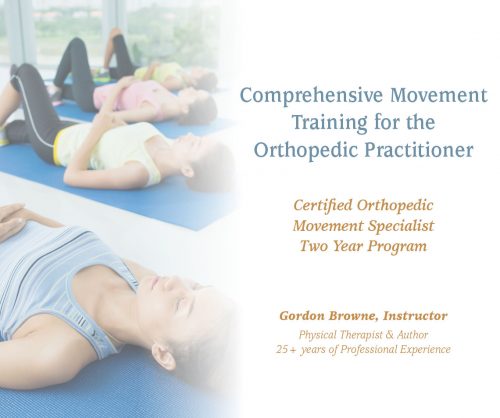
Dates
First Year Dates
- Segment 1
- September 25-27, 2020
- Segment 2
- January 22-24, 2021
- Segment 3
- March 19-21, 2021
- Segment 4
- June 25-27, 2021
Current program 2018-2020
Location
Kenmore/Kirkland, WA—Bastyr University
Apply for this course here
Bastry University
14500 Juanita Drive NE
Kenmore, WA 98028
425-602-3000
Testimonials
"This two-year course has without question changed how I practice. We learn in school to focus on functional movement, however it wasn’t until this course, some eight years removed from school, that I truly understand what that means. Thank you!"
"In 30 years of practice this has been the most educational, enlightening and enjoyable journey. Application of movement education has changed my perspective on evaluation and treatment. Very dear to my heart for my own journey, helping decades of discomfort change with exercise."
"It is so great when there are people willing to dig deep, break the mold, think holistically and see movement from another perspective than the traditional one. It is even better when they do it in a fun learning environment and they are truly geniuses with their knowledge interacting with a lot of professionals in the same field. So inspiring, thank you so much Julie & Gordon!!!"
"After being a strong college athlete, I went to PT school, prioritized other things, added some injuries to my low back and relegated strength and movement to past tense and/or a nebulous future occasion. This 2-year movement training has gotten me back in touch with my body, given me exciting new goals and aspirations that are more healthy and balanced and taken me in new directions with patient care. Thank you!!!"
"My whole life has changed as a result of this program. The personal benefits of understanding how I move are as great as the professional benefits of being better able to help my patients."
"Standard exercise never seemed to resolve my imbalances or allowed me to problem solve on my own but through each of the lessons I learned more about my body and how it could move to fully recover from all my injuries and poor movement patterns."
"I love you, your work is divine, don’t stop!"
"This course has broadened my understanding of the infinite ways a body can move and how to instruct patients to move in the most optimal way. It has changed my life and my patients, family and friends have all greatly benefitted from this mind-body movement awareness training. I am truly grateful for Gordon and Julie’s invaluable work and will take the knowledge and skills I have learned to my activities of daily living for the rest of my life! My back feels awesome! I am transformed! Thank you!!!"
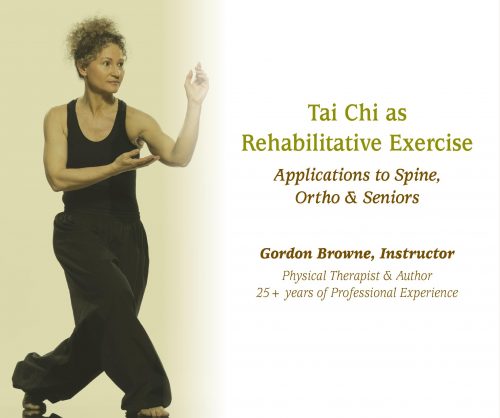
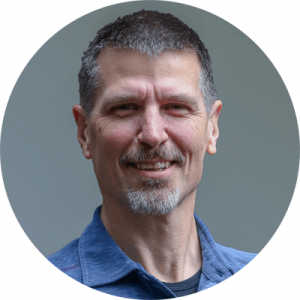 Gordon Browne, PT
Gordon Browne, PT

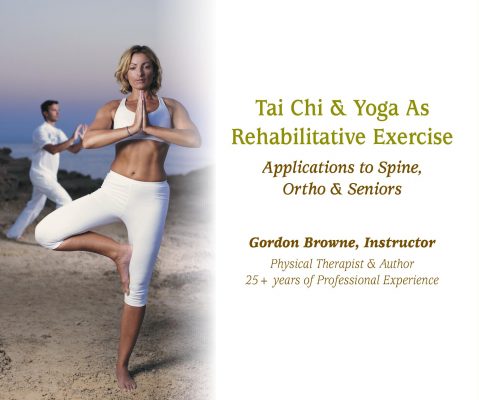
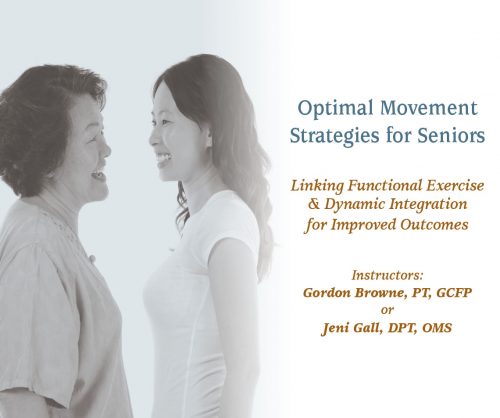
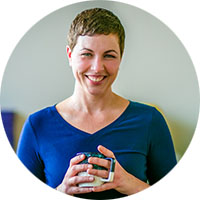 Jeni Gall, DPT
Jeni Gall, DPT